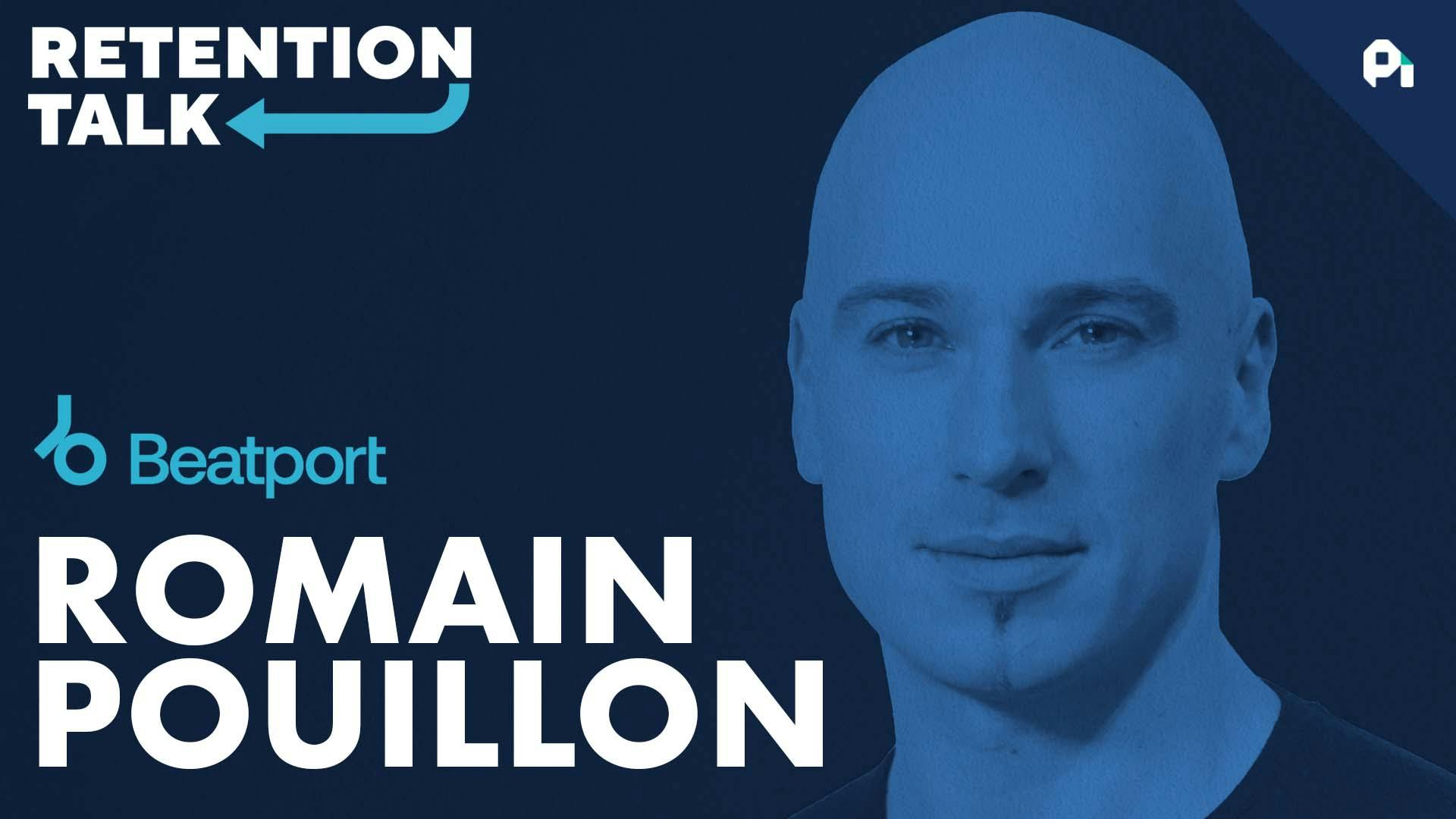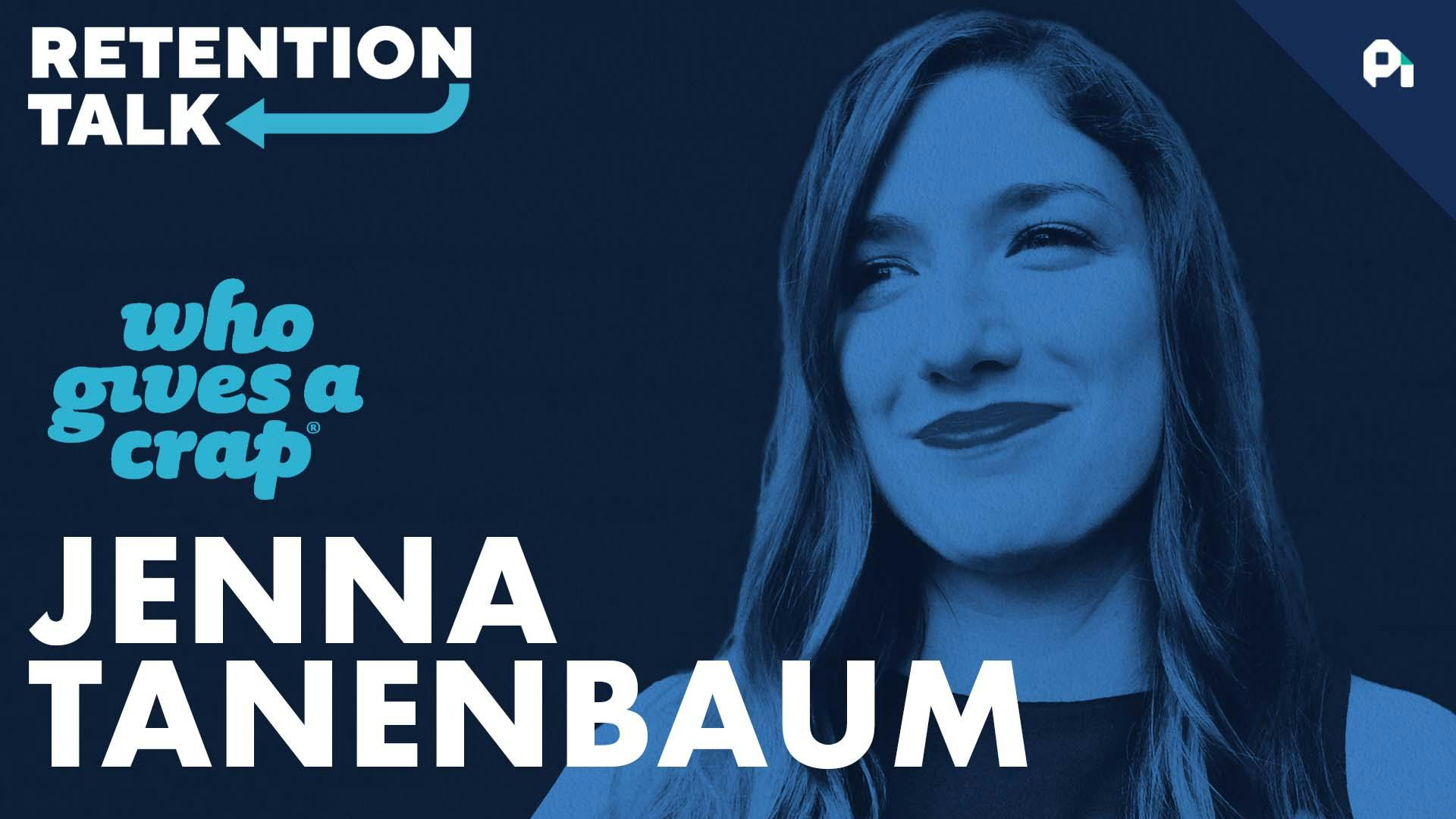
Retaining customers one bag at a time | Trade Coffee's Mike Lackman
This episode might reference ProfitWell and ProfitWell Recur, which following the acquisition by Paddle is now Paddle Studios. Some information may be out of date.
Please message us at studios@paddle.com if you have any questions or comments!
From kickstarting your morning to late night hackathons, coffee has a firm grasp on our culture. Addicting in nature, coffee should be an easy sell month over month... but if a delightful experience isn't hammered home, retention is getting tossed out with yesterday's grounds.
On today's episode of Retention Talk, I speak with Mike Lackman, CEO of Trade Coffee. We talk about acquiring customers the "right" way, retaining customers one bag at a time, and reducing friction in your cancellation process.
Key points discussed in the episode
We use data to make sure that we get people [the] coffee that they are guaranteed to love enough—that they'll trust us to pick the next bag for them.” - Mike Lackman
Acquiring customers the “right” way
At Trade Coffee, they use data to make sure they get people the coffee they're guaranteed to love. There's a bright line between doing what’s necessary to acquire the right kind of customers the right way, versus acquiring customers and figuring out how to retain them later. Every single interaction with your customer is either a value-add or a value-diminishing interaction.
A voice of the customer program (VOC) survey can very easily be a value-diminishing action. Asking for a lot of information takes time. But it doesn’t have to be a survey per se. Get creative. Look at or evaluate through a community forum, review sites, and more.
Retaining customers one bag at a time
Mike talked a lot about focusing on the experience had with the product on a single-unit basis. Did they like the taste of the coffee? Did the bag show up on time? Did they make some sort of customization to their order? By providing the best experience possible, retention becomes second nature.
Reduce the friction in your cancellation process, but don’t eliminate it entirely
Making your cancellation process difficult isn’t going to inspire a customer to come back down the line. Try to figure out why the customer is cancelling. You may not be able to change their mind at the moment, but you can figure out how to prevent future cancellations for the same reason.
Take Action:
Talk is cheap, but action backed by data is priceless. So, let's cut to the chase and hook you up with data you can use to inform your decisions.
Check out our Subscription Churn Benchmarks where we broke down data from 30k SaaS and Subscription companies to show how churn and cancellation rates are trending. We cover:
- Churn by price point, vertical, region
- Payment failures by location and seasonality
- Impact of salvage offers, upgrades, reactivations
- 57 other data slices across B2B and Consumer
Do us a favor?
Part of the way we measure success is by seeing if our content is shareable. If you got value from this episode and write up, we'd appreciate a share on Twitter or LinkedIn.
Well, we try to work on our best customer facing input metrics. Those perceived high value activities. It's not why did they cancel? It's what activities are shared by the people who have an awesome experience with us? How do we create that the tightest kernel, that being something as simple as like, they're made at least one customization action
in the first 45 days. They said they liked something. They asked for something on a different time. They took some agency and changed their profile. Refined it did something like that. That act of customization is a big deal for us.
Welcome to retention talk. I'm Neil Dhesi, and we're talking to the best minds in the world of product and customer success to bring you actionable strategies on reducing churn and boosting retention. This week is a special one. We're talking to Mike Lachman, CEO of Trade Coffee.
For those that know me well, they know that I am a coffee. In this episode, we talk about acquiring customers, quote unquote the right way next retaining customers one bag at a time. And lastly, pay close attention to how much friction you need a cancelation flow.
This one is pretty surprising. Let's dove in. Mike, thank you so much for being here today. I am such a big fan of trade, so I am pumped to hear a little bit more about how you guys are building the brand and focusing on retention today just to kick us off.
We'd love to hear like, how did you end up starting this and what are you working on today that, you know, really speaks to you? I mean, easy answer to that one is that I didn't start it. Actually, I I came in as a CEO early stage.
There was a small founding team that got a beta into the market, and I came on a little after that started. But when I saw the opportunity, my background was in specialty CPG and e-commerce. I understood why some of these premiumization trends looked like, but I really did not understand what was happening in coffee.
I was like a lot of folks that drank a lot of coffee but didn't know what was really going on with the category. When you look at the value we can create for a customer, this is such a pervasive part of people's lives.
I think attitudinally, the notion that it's still going to be this thing, it's so poorly understood in the future is something that I would push back on really wholeheartedly. I think this is going to happen. And I think it's a way for us to be able to create something that's really special that is accessible to so many
different people. A lot of people look at coffee and think about Starbucks, and a very interesting thing about the beginning of Starbucks is Howard had this idea. Howard Schultz had this idea that anybody in this country that had a couple of dollars in their pocket should be able to have this amazing cafe experience.
And for all of how big Starbucks has become and the scrutiny they can, they can garner times. It's pretty remarkable that you can be in Des Moines or Dubuque or you want to be. If you got $2 in your pocket, you can walk into an awesome place, sit down, have a great experience that never would have been
inconceivable 20 or 30 years ago. We think something like that is possible for them. This is something that if you can afford Hulu, you can go from C -2. And if you want to spend an extra couple dollars a month, you can get a plus.
Coffee is so accessible, but you can do it so well and we can make it accessible for such a broad audience of people that in this day and age where everyone's working so hard for every dollar that they have.
The fact that we can make something just awesome for such a broadly accessible group of people is a really special thing to build. And I think the really incredible piece of this is that we can do so by making these small roasters that we work with a bigger part of the coffee economy by making sure that the
dollars being ascribed to this in value by consumers are making it fairly to growers at the point of origin who are making a living wage and being able to invest in the future of their farms. And then from a from a mechanic's perspective that we're doing so by creating something transformative, which is we really do believe that
data driven personalization that's really thoughtful and emotional, but also really rich in the hard mechanics of how you merchandise is going to be the future of retail. And that's something that we think that we can pioneer on by trying to make a categories as interesting and peculiar as as bags of coffee in the mail work.
That makes a ton of sense, especially given the trend of like, you know, I feel like over the last couple of years, consumers are a lot more educated when it comes to what they're drinking this last year, while we've all been stuck at home, right?
I think people want that elevated experience. Something I was thinking about I was preparing for today is like, on one hand, you guys are in an extremely competitive space, but doing something unique, right? So how does trade think about customer retention and an increasing lifetime value in such a heated world?
Like, what metrics do you track? And ultimately, how do you align the team around not only the the acquisition part of the, you know, buying experience, but ultimately, how are you guys retaining customers? You know, for for as long as possible?
I mean, the simple answer is that we retain the one bag at a time. We need each experience the way the coffee tastes where it came from. Did it show up on time? Did you get the content that is not just good, but like noteworthy good like call up a friend and tell them how much you like
it? Good. When we can nail the experience, we earn their next bag and very often earned word of mouth, which is how we're reaching. Even as we've scaled and increased our ad budgets, increase the scale, the business, how we're continuing to reach almost one in three customers that we bring into the business.
So when we can do that stuff really well, that's where retention comes from. It's not hooks and crooks and tactics like those things are important, but those are necessary. They're not sufficient. I think the the other layer of of what makes retention work for us is we try to think about ourselves operationally a little bit more like
a software business than a merchant. I don't know how to look at someone working in our company and say, go make retention better. I think that's like trying to bend a spoon with your mind. What we try to work on are those customer facing input metrics, those perceived high value activities.
It's not why they cancel, it's what activities are shared by the people who have an awesome experience with us. How do we create that? The tightest kernel, that being something as simple as like? They made at least one customization action in the first 45 days.
They said they liked something. They asked for something in a different time. They took some agency and changed their profile. Refined, it did something like that. That act of customization is a big deal for us. So how can we then delightfully in the way it's customer centric, make more of those experiences happen?
That's really where that second level retention comes from. And I think if you try to listen to what comes up in the comments and make all the cancelations go away, you can chase your tail a bit. Got it.
So it sounds like what you're saying is like really focusing on the positive experiences as opposed to the negative ones, right, which is identify common patterns or themes of shared actions between your, you know, quote unquote power users and then double down on them.
Right? How do you like to get away? Right? Like, yeah, like leaving when we mess up and those have to stop happening, but I don't think that's enough. I think there's a real ceiling on how much that I'll get you, and you just have to make sure you make the time and space, even when resources are really
tight to make the good stuff happen more often. Yeah. How does this work tactically like? Is it? Is it just a team every once in a while checking in on these metrics? Is it you guys are running experiments that drive certain behaviors, like how do you line the entire team around this?
Because clearly it's not something that one person is responsible for. Like, how do you deploy this, this sort of culture across the entire company? So one thing we do, and we're still not a huge company yet at an earlier stage that frankly any of us thought was possible, we broke into a system of squads for a project
element efforts where we're somewhat matrix as an organization and that allows us to actually have different squads focused on the first customer experience and the returning customer experience. Now we think that each are equally sensitive to retention, the kind of incentives we offer, the kind of people we bring in, channel by channel, promotion by promotion, different ways
of activating customers is probably actually the largest determinant of retention. Say forget it. Here's a free bag you know, stood on the street corner, brought anybody and no amount of work on the back end is going to make that work for us.
And it's a extreme example. But I think getting that right is one component. But they focus on the things that are observable at that first experience of the business. And we think that the UX, the trial, all those things.
When you're convincing people we're a company you haven't heard of, we do this thing. We really think that you should do this. Here's our offer to you. That is one whole stack for us. Once you're in and this is where it is a little bit more like a software business than a typical retailer.
Now it's similar to Netflix or Spotify, or some of these, you know, less physical goods, service oriented subscriptions, even SAS businesses like MailChimp or Dropbox. You have these experiences, which is this is why you should use it. Now here's you using it.
And so the returning user experience is very much more of that great. Here's the next coffee coming for you. Here's the queue of things that you can optimize different suggestions of things you can put in the queue. And in constantly looking at which ones are an engagement, why do they are they logging in?
Where do they log in? What experiences do they need from us? What would delight them? And that could even go out into what we've done in the pack slipped within this other supplement or anything that happens there. You get focus and every one of those teams is just really maniacally focused on those customer facing inputs that are
what components of this really matter and less focused on trying to make those really big kind of end of the quarter. Panel metrics move the right direction and just getting those customer facing ones that are more granular, right?
When week at a time that makes a ton of sense, right? And I think it aligns that entire squad to like the singular metric, which is keep customers coming, coming around over and over again. And and this next bag that they get is going to be pivotal to earning another month or so to speak, right?
I got to ask what? So ultimately, let's say, let's say a customer does cancel, like what happens? Because because clearly that's something that you know, you want to avoid for as long as possible, but it's inevitable at some point in the customer lifecycle.
What does that look like for trade and how do you, you know, incorporate that feedback loop into your core offering? So the first bit is with zero friction. The days of call to cancel, jump through hoops, make it too annoying and then make the person give up like those days are over.
And the reputational blowback for that is is so much worse for us than the potential impact of marginally reducing the retention rate by improving retention rate, by making people jump through hoops. So the first bit is it's really easy to cancel.
Think want to cancel? We have ways for them to pause, and we do some work to try to make sure we understand why, if we can. But we have a reactivation flow that we've invested in that understands and we actually have a pretty solid reactivation rate where it's more of a pause experience for the consumer than a
real cancel experience for the consumer. And then they can jump back into that or make it change their profile or frankly, even leaves the door open to us if we make a product enhancement where we really did fail the customer, let's say that they really wanted a combination of this profile and that profile at the same time
with the ability to skip that. Like there's there's been features we didn't have to satisfy customer that once we build them, we know we can go back to those folks. We have the ability to in that reactivation. But I do think it really does come down to trust and.
I don't think that we harbor the idea that at that point of cancelation, once they click that button, that's the time to start to try to turn a no into a yes. I think we look much more sensitively at those very early points in their life for what key things can we earn from them by doing it
right? And then I think we can challenge ourselves more to now as we mature a bit as a business. Think a bit more about that twelve, 18, 24 months old customer where we should be working harder to go back and relearn that delight in ways that are really specific overtures.
Yeah, it's a place where it's it's hard to chase the data on that because it tells you that they're going to be really loyal regardless. But I think it always pays off to make sure you take care of your best customers.
And that's something that if I'm blunt, I think we could do a better job of it we're working on right now. That makes a ton of sense, and I think philosophically I'm aligned because I think there's a ton of ecommerce brands where you try to cancel and you have offers flying in from all over the place.
You have a multi flow process, maybe even a human involved. And I think to your point, we need to make life easier for customers as far as opting out of a subscription, right? How do you how do you reconcile that with like learning, though?
Because I think something that I've noticed is at the very least, you want to understand why, right? Why is someone canceling? So to your point, right, a lot of folks might pause the subscription in. Some might cancel and come back.
How do you reconcile the low friction with still trying to salvage the customer if you have something for them? So one of the benefits that that trade has is that because our average consideration sizes smaller, we have a lot of people and actually a lot of transactions for every relevant hour, we have to put up against 15
businesses of similar revenue size, the folks selling mattresses or even like the meal kit stuff like a 200 dollar consideration size or 150 dollar per box consideration size actually don't have nearly as much data. Even as a younger company without quite as much revenue, we have a ton of transaction volume.
And I think we learn a lot more from the cluster analysis of how do 2500 people who had this shared experience perform than we do from asking them to type? Tell me why. Like, because the answer is going to be they want as little friction as possible and it's going to be some form of it's not you
, it's me. That's not really true. Like, I think the amount of human confrontation involved in getting a customer to tell us, I really hate your confirmation emails. There's going to be a lot of people who think that way and don't tell you this is not worth their time and we didn't earn it from them.
There are also be folks who say that, but actually still our customers, and you don't want to chase your tail on the confirmation email of it's not the most important thing to work on. And so I think that's where looking more at those affinity groups to understand not every single thing that could be better, but the most
consequential thing you can do one kind of really meaty customer segment at a time that's a big deal. And very often that gets more to core product stuff than to marketing optimization stuff. And what we found is a lot of that is also about segmentation.
We're at a point where we have a good, better, best side to our business. We merchandise different things differently and we don't always try to sell everything to everybody at the same time. So making sure people are getting the right product for them and we're not jamming them into something that they might convert on day one, but
they're not going to buy in the long term. Those are the kind of things that I actually think again, at the end of the road, you learn very little. It's a very satisfying thing to say. Let's, let's put it, put a stop at the exits.
But if people are heading for the exits, they're out the door when people in the seats. And I think that's keeping people in the seats is more what we try to do. I love that. And especially to your point, is like it's hard to know if the frustration at the end is really indicative of the core reason
why they're leaving, right? And so I think working backwards and trying to uncover those patterns are probably more effective. Is there anything creates struggles with because it sounds like you guys are highly data driven and really have a good grasp on proactive sort of churn risk, so to speak, right?
Like, is there anything at this point in the journey that that you guys feel like you could be doing better when it comes to perhaps improving the customer retention? I would say two things. one, we're always trying to simplify, and I think we found a lot of opportunity by having some customization and some breadth and hitting on
different things, and we've tried really hard to embrace. I don't want to ascribe to any one particular methodology, but let's just say lean startup methodology of getting something in front of the customer quickly. And one of the challenges becomes especially in a very young business where we still have fewer than 40 people.
You can end up having fingers in a lot of pies. And so I think we could simplify our experience more, and we're really grateful to the customers that put up with some of the more complicated UX experiences we've ended up building to be able to satisfy what we're trying to build for them.
And I think the future version of us will have equal or better customization features that don't feel quite as complicated. I do think that that form of accessibility is a great example, the sort of thing that when we get it right, we know it's better for LTV.
I can't imagine it being the kind of thing that shows up on a cancelation comment. And so I think that that's that's a big one. And then, yeah, I do also think when you're really disciplined about the way you grow your company and when you're really focused on making sure you can deliver on the tangible things you
can track, I still think even though we're focused on it, we could do a better job of focusing on the positive and looking for those green space, joyful opportunities to do something that blows their socks off. And I think early days from a data driven perspective, we were hesitant to ever listen to the kind of Henry Ford
. You know, if people told me what they wanted, they would have said faster horses kind of stuff. I think we always bristled at that as being a bit cavalier. I think it when you push too far away from that where you can lose some of that green space to say, Hey, what's that really tight kernel of what
we really believe the customer wants that it will earn their trust? What is the single most incredible, delightful, awesome way to do that? And how do we validate that? And I actually think it's one of the hardest things to do.
Remote right, like making empty space for that is really hard when you're back to back and zooms and all those things where at least in my career, you've actually had a lot of those best experiences when someone says, like, Hey, I'm going to order two pizzas and we're going to sit down and come up with a couple
ideas here. And it's not under the gun and it's not in the cards already. It's more, Hey, what's that really cool creative thing? And you're willing to take risks and some weird ideas or things that seem esoteric because one out of 3126 times one of those ideas is just a huge winner, and it's something you might have
thought of, and you might really surprise the customers with it, too. No, I wholeheartedly agree on that front. Few of us are antsy to get back in the office just for that reason, because it's hard to riff on exciting, innovative things without being super prescriptive about Zoom meetings, right?
So I I hear you on that front. I know we're coming up on time here, but quickly, like, what's the future of trade? Are you guys all in on? Is the future of coffee at home? Is it something else?
Is it a hybrid? We'd love to just sort of round out by hearing, you know what, what the vision is moving forward and what you're most proud of, you know today. Well, there's no question that not only is there going to be a much more important place for the home with coffee now than was the case a
few years ago. But I really think the future of coffee for the rising generation is that more people will know what the coffee is and care whether that's in home or out at home. We just care about trying to make consumers really excited about the experiences they have and empowered to have, and they feel delighted by and
to make smaller roasters in their current partners a bigger part of that, whether that's out of home or in home. I don't think that an NBA team sees the cable viewer and the stadium attendee as competing with one another.
I think they both are really valuable for the enterprise, and we kind of look at things a similar way. What I would also say, though, is that the future is very much going to be in asking some of these really high level questions, which is is the next generation of coffee drinkers who are going to create some
of these habits and make these choices with their hard earned money. I think we're putting more sugar in what they're doing. Or less? Are they going to be caring more about Providence or less, are they going to care more about brand and supporting local businesses or less?
And if you think that more is the answer to most of those questions, then from trade's perspective, it's what can we do to build such an outstanding experience and to invest in the things that customers need, and we know we can differentiate ourselves on that.
We can keep our promises to our stakeholders, customers, employees, partners, all included. And when we do that, we can build something that we believe is going to be transformative. And internally, when you ask about the future of trade, a big part of how we behave is that we want to be able to build something transformative, inconsequential, but
be really proud of how we got there. I mean, one thing I talked to our team about a lot is I would want to be able to be proud of if my kids saw me working. How you behave when you work?
Or would I be proud to see my kids become the kind of people that I work with? You know, if we can build something really consequential and build the kind of company that is run that way, that's the future that we're trying to create, and we're really dead set on realizing that vision.
Love it now. Thank thanks, Mike. That sounds exciting. And as a as a just a fan of the company and a pretty big coffee nerd, I'm excited to see how that evolves in the next couple of years. Yeah, I mean, please, we've got a great Father's Day program.
I don't know if the policy had dropped before or Father's Day, but up to the last minute. Our digital gifting program is amazing. We actually got an outstanding customer reception on our digital gift programs for Christmas, and especially if you're looking for something for Father's Day last minute.
It's an awesome gift that you can set your dad up with as many bags as you'd like. They're able to fully experience the full custom trade subscriber experience in a way it's entirely plate price blind. So it's just a really awesome, generous gift that you can give somebody who really loves coffee and we're selling our kolber program
all summer long. And so if you'd never made your own call brew before but you like Cold Brew, it is almost effortless. We sent you everything that you need. The coffee is made on demand green to brown shipped to your home.
It's about a dollar, a cup versus bringing bottles home from the store. And it supports a local roaster, and it makes something that just tastes so incredibly perfectly chocolaty and delicious that I think you're going to find. It's a really great way to enjoy coffee or in the summertime.
Cool. Well, thanks. Thanks, Mike. I appreciate the stories. And like I said, I think our audience will get a kick out of this one just because I think it's a brand that a lot of people know, you know, taking a peek behind the hood around how you guys think about retention.
But but but essentially like earning every cup is, I think, pretty special. So thanks for the time and hope to have you again soon. Thanks, Neal. A huge thank you to Mike for lending his time today on the podcast.
With his help, we've leveled up our retention skills. To recap acquiring customers the right way at trade coffee, they use data to make sure they get people coffee that they are guaranteed to love. There's a bright line between doing what's necessary to acquire the right kind of customers the right way versus acquiring customers and figuring out how
to retain them later next. Retaining customers one bag at a time. Mike talked a lot about focusing on the experience had with the product on a single unit basis. Did they like the taste of the coffee? Did the bag show up on time?
Did they make some sort of customization to their order by providing the best experience possible? Retention becomes second nature. And lastly, reduce the friction of your cancelation process, but don't eliminate it entirely. Making the cancelation process difficult isn't going to inspire a customer to come back down the line.
Try to figure out why the customer is canceling. You may not be able to change your mind at the moment, but you can figure out how to prevent future cancelations for the same reason. Thanks for listening to this week's episode of Retention Talk.
Don't forget to subscribe at retention tocome. If you want to help spread the word, tag me on Twitter and you'll decide. 23, and let's dish on today's episode. Please give us a five star review on the podcast platform of your choice and let your friends know as well.
If you know a great guest, hit me up and Neil UNPROFOR welcome. This has been a profitable record production the largest, fastest growing media network dedicated to the world of subscriptions.
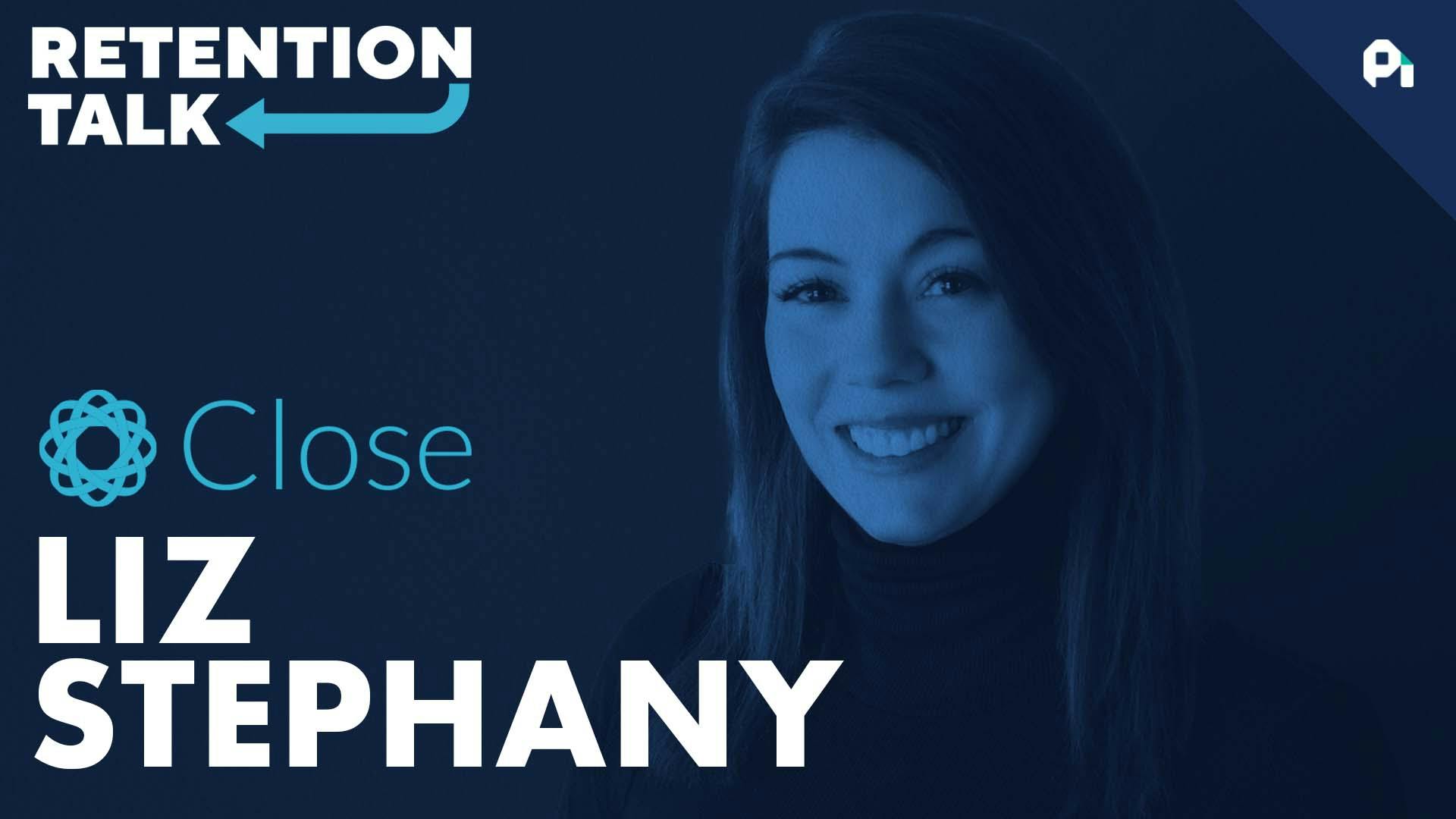
Two ways to segment churn | Close's Liz Stephany
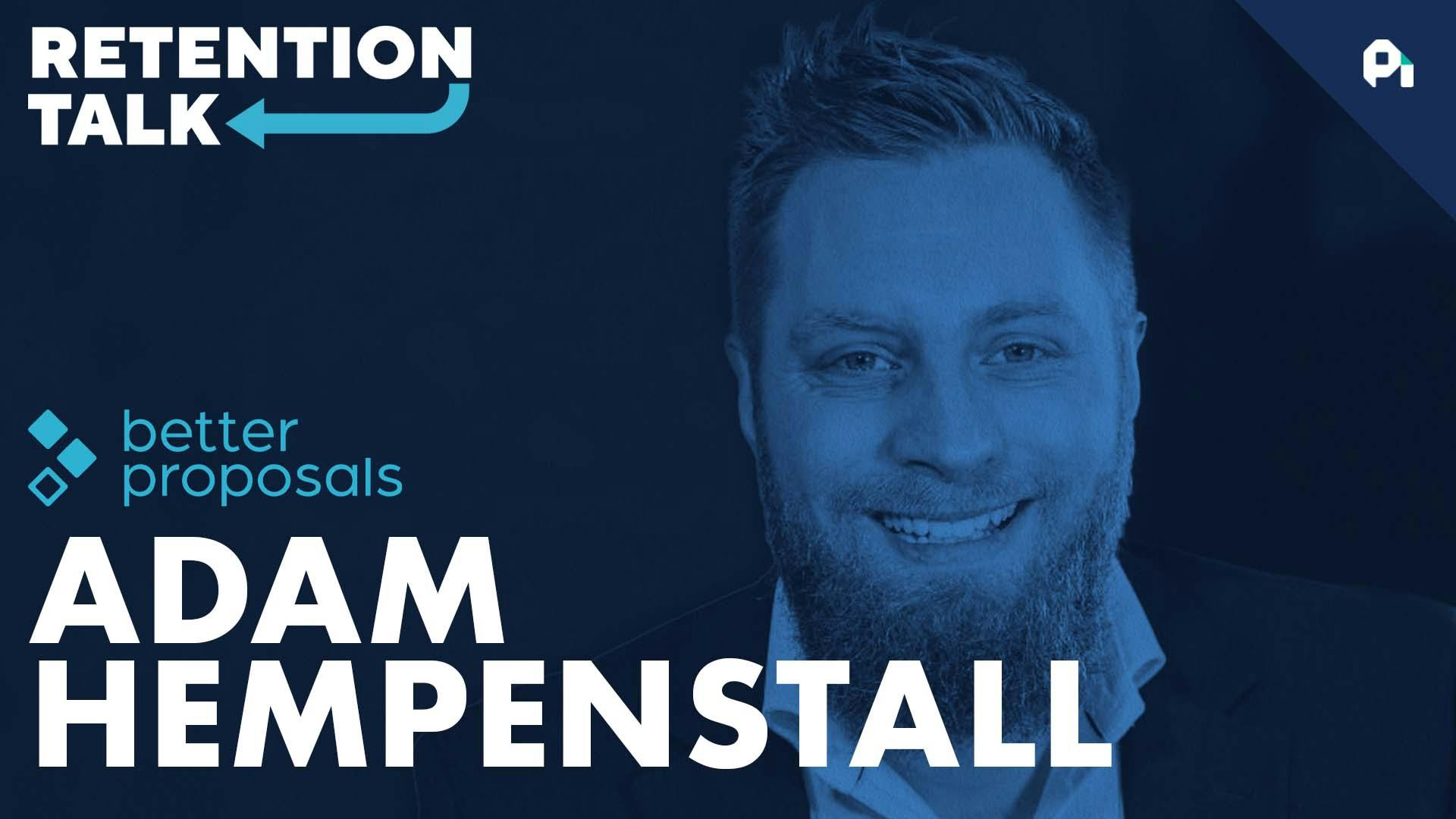
Overthinking, hacking retention, and rallying around metrics | Better Proposals' Adam Hempenstall
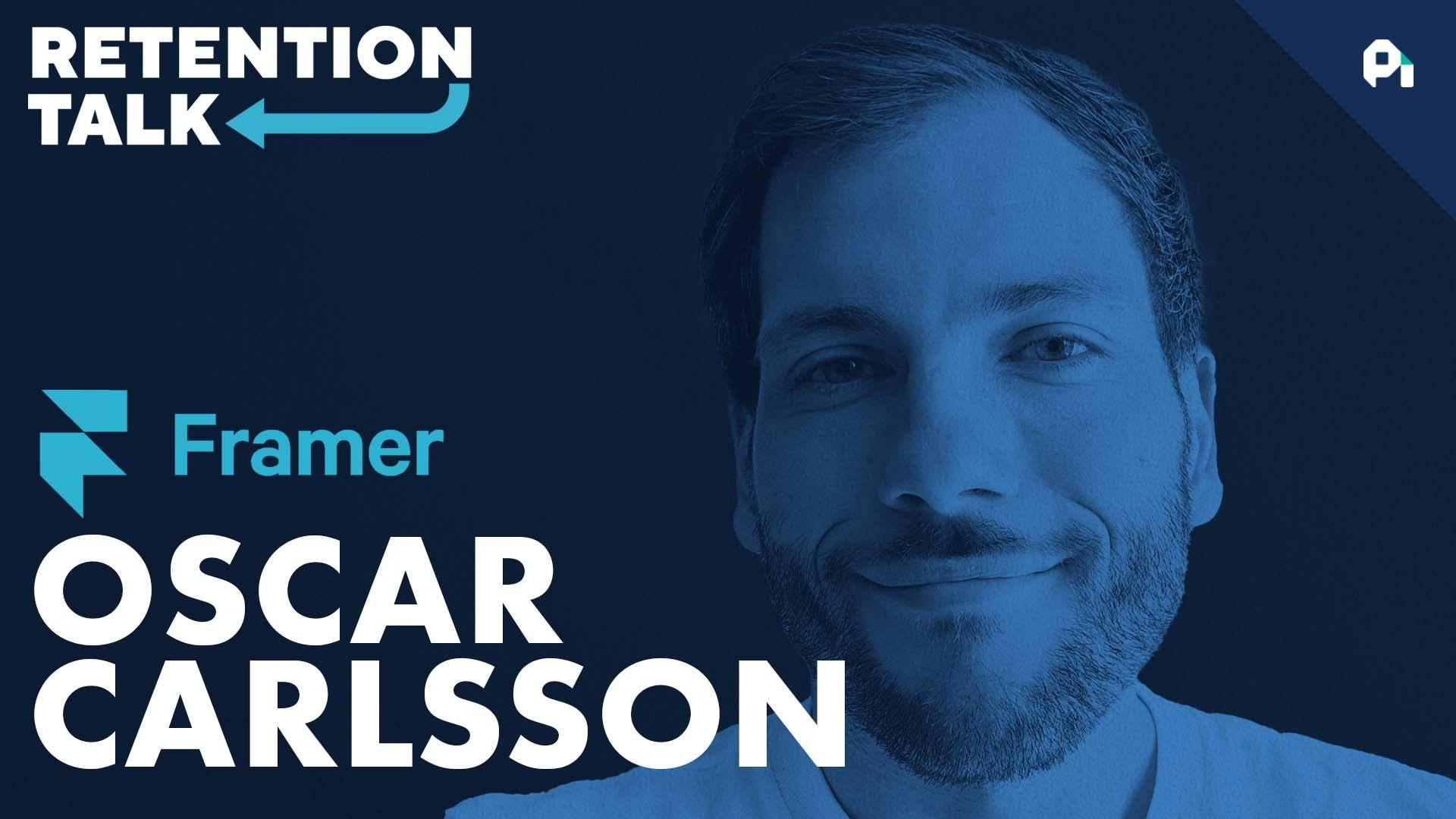
Product roadmaps, leveraging data, and defining churn goals | Framer’s Oscar Carlsson
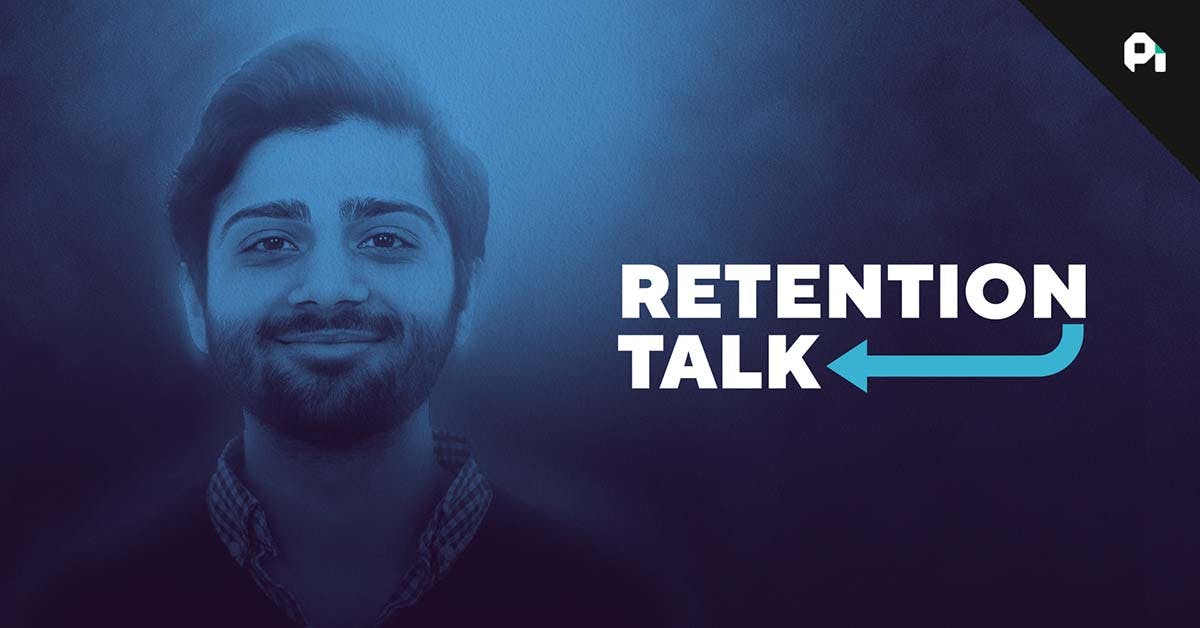
5 Key Strategies for User Retention
